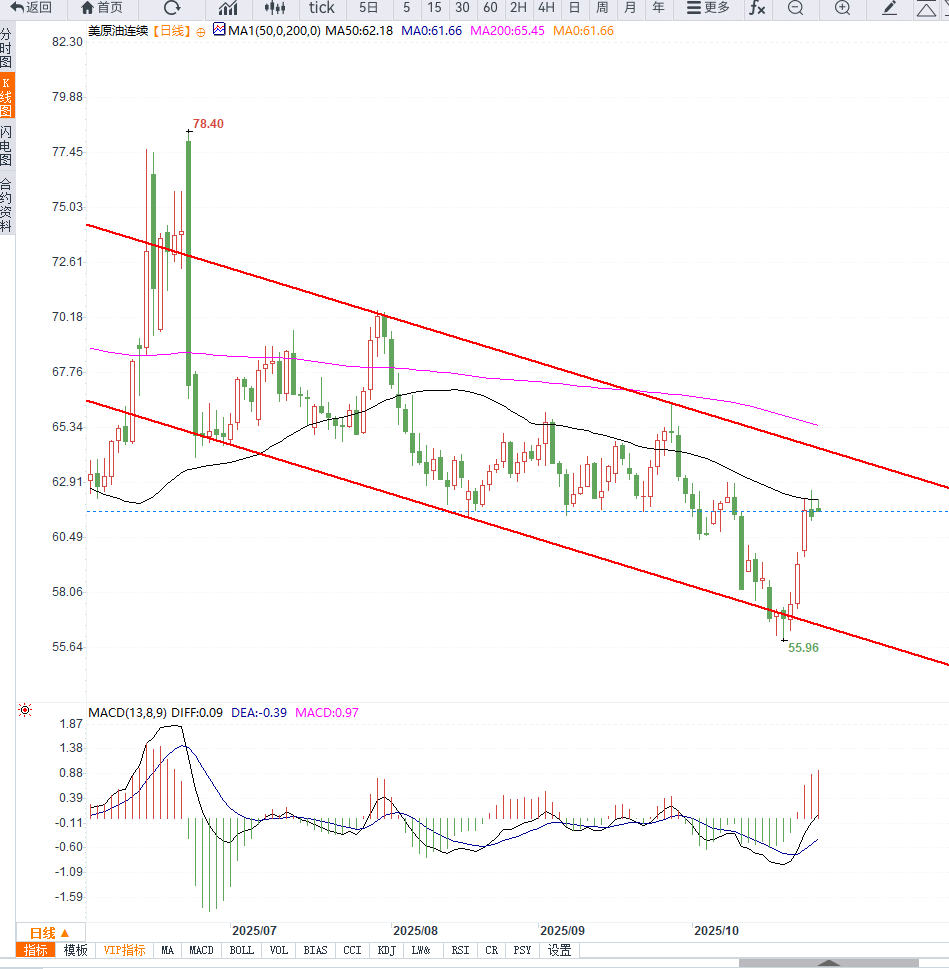Crude oil trading reminder: Easing trade sentiment has pushed oil prices upward, and short-term direction choices are facing
2025-10-27 09:17:50
After the previous continuous pullbacks, this round of rebound mainly came from two types of driving forces: one is the improvement in demand expectations brought about by the easing of trade concerns; the other is the supply structure disturbance caused by the sanctions on Russian oil.

According to market research, the negotiators reached agreement on several key points, paving the way for a high-level meeting between the two sides. The market believes that this will help reduce downward pressure on the global economy and thus improve the crude oil demand curve.
Meanwhile, the massive tariffs threatened by the United States are seen as a short-term exit signal, leading to a rebound in risk assets overall. Meanwhile, U.S. sanctions against major Russian energy companies are having a secondary impact.
Due to a significant drop in purchases from major Asian countries and India, buyers have begun to seek alternative sources of supply, easing trading sentiment that had previously been concerned about loose supply. This expected tightening of supply has played a significant role in supporting this rebound.
Despite this, the market is not completely free of risk. The current backdrop remains constrained by factors such as elevated inventory pressures, rising OPEC+ production, and a slow recovery in end-user demand. Therefore, while oil prices may improve in the medium term, they remain within a sentiment-sensitive range, and gains may be limited by selling pressure at the top of the price.
According to market research, many energy institutions believe that the rebound in oil prices is driven by policy sentiment rather than pure improvement in fundamentals. There is short-term continuity, but whether the trend can deepen still depends on inventory, production and the progress of negotiations.
"The uncertainty of Russian oil supply and the expectation of easing global trade sentiment provide emotional support for the rebound narrative, but the oversupply environment will still limit the upside of oil prices." - Vanda Insights
From a daily chart perspective, WTI is stabilizing near $61.5, with the MACD showing signs of convergence, signaling a correction. Short-term volatility favors a stronger-than-expected trend, but if trading volume fails to expand or trade sentiment fluctuates, oil prices could retest moving average support.
In the short term, it has entered a dense pressure range. If it cannot break through around $62.50, the possibility of a further decline cannot be ruled out. We will wait for the direction to be chosen after the stress test.

Editor's opinion:
Judging from the driving force structure, this round of price increases is driven by "expectations of improving sentiment and supply disruptions," rather than a pure demand recovery, so the resilience of this trend remains to be verified. Focusing on changes in global trade sentiment and inventory data, if oil prices stabilize within support, there is still room for temporary upward movement.
- Risk Warning and Disclaimer
- The market involves risk, and trading may not be suitable for all investors. This article is for reference only and does not constitute personal investment advice, nor does it take into account certain users’ specific investment objectives, financial situation, or other needs. Any investment decisions made based on this information are at your own risk.





















